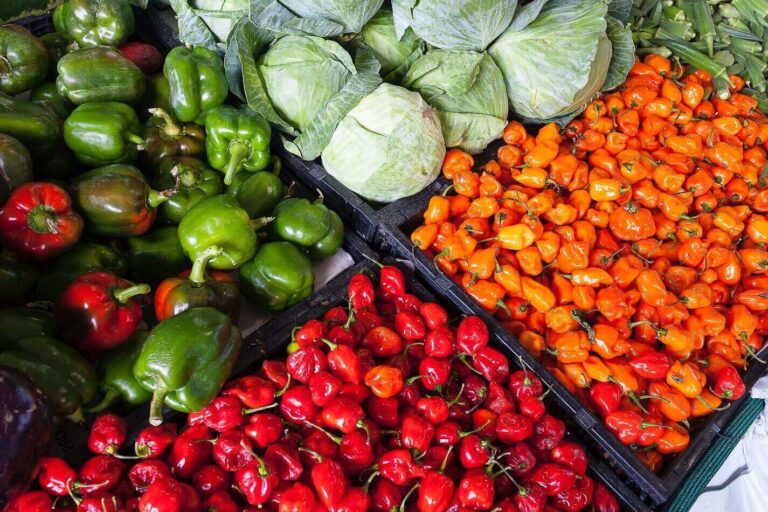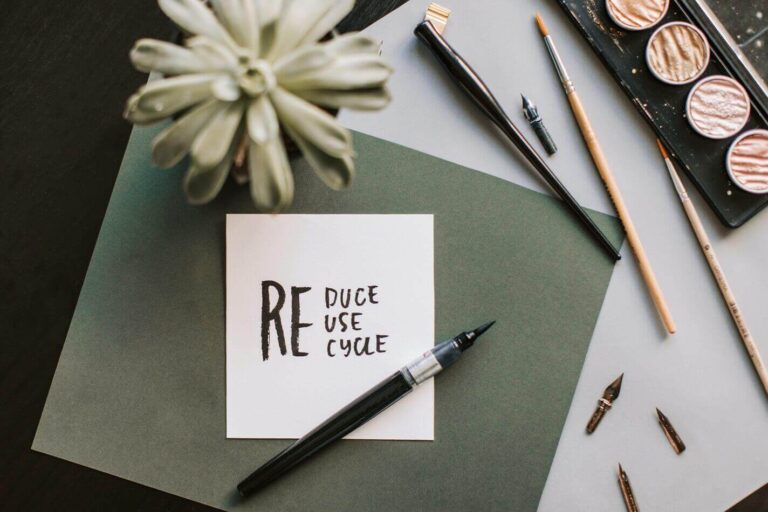sustainable living 101 | how to achieve a sustainable lifestyle to save the environment
table of contents
- what is sustainable living? why does a sustainable lifestyle matter?
- how to achieve a sustainable diet at home
- how to dispose of waste sustainably saving the environment
- how to shop with sustainability in mind
- what is sustainable tourism? how to travel sustainably
- can achieving a sustainable lifestyle be a realistic goal?
- summary
what is sustainable living? why does a sustainable lifestyle matter?
In recent years, we have seen an increasing consciousness about the environmental footprint we leave on this planet, as a response to all the consequences our past and current actions have on the environment surrounding us. It is undeniable the impact we humans have had on this world, and the necessity to change it to avoid permanent damage in our world, that is where sustainable living comes into play.
What is sustainable living, you may ask? Well, living sustainably consists of the actions we take in our day-to-day lives in order to reduce our environmental impact to a minimum, either by eating a sustainable diet, sustainable tourism, finding ways to reduce waste, consuming fewer things we don’t need… There are many options for us to choose from when it comes to living a more sustainable and environmentally friendly lifestyle, we just have to start doing them.
We will be talking about a few ways you can do so right now from the comfort of your own home because achieving a sustainable lifestyle is not hard at all, all you have to do is to have the interest and care to just start changing your actions. So do not procrastinate in your journey to become a sustainable and productive member of society.
In conclusion, a sustainable lifestyle is one that aims to reduce our environmental footprint on this planet, a world that we are sadly destroying with our careless actions every day and one that we cannot ever replace. We highly recommend that you check out How To Have A Sustainable Diet At Home.

how to achieve a sustainable diet at home
A sustainable diet is focused on eating healthy food that also has little impact on the environment and has a low carbon footprint because the current food industry is producing around 20% of the world’s greenhouse gas emissions and uses about two-thirds of the world’s water usage worldwide. It’s a diet that, even if it promotes a healthy living style, does focus a lot more on the environmental impact our food choices have and plans to reduce them to a minimum, improving our society’s overall life and future generations.
How do begin to eat more sustainably? You may ask, well, it’s not as complicated as it may sound at first glance, here are 5 tips so you can begin eating more sustainably at home:
- Eat more fruits and veggies, these are not only healthy options that should be in everyone’s diet, but they are also one of the best environmentally friendly options out there. These produce much lower gas emissions and require fewer resources than other types of foods, so, feel free to eat as many fruits and vegetables as you want! Now you know why you should have listened to your mom when she told you to eat your vegetables when you were little.
- Avoid highly processed foods, these are not only very bad for your health but their production and transportation have a big environmental footprint that you want to avoid taking part in. Always prioritize foods that are natural and unprocessed, you don’t have to exaggerate though (Don’t go out there eating vegetables directly out of the dirt).
- Try to buy locally, as we said earlier, this is a great option because generally, it doesn’t matter as much what you eat because it is produced locally, on small farms, which always has a less environmental footprint than conventional supermarkets imported industrial foods, it also saves the carbon footprint transportation leaves. Plus, you are supporting small businesses from your local town or city, which is always a great thing.
- Choose sustainable seafood, marine life is a great choice for our diets, it has many great nutrients that improve our health and lifespan overall, however, you should be careful when choosing seafood. Overexploitation is a very big problem for marine life as a whole, so you should try to buy seafood grown with aquaculture or captured artisanally, which is a sustainable and conscious way of consuming seafood.
- Reduce your waste, buy only what you will eat and never throw out any food (this is a no-brainer), you should also compost the organic waste and avoid using plastics and single-use materials to package and store your food. This is a whole subject to talk about in itself, so if you want to learn more about it feel free to check the United Nation’s article on how to reduce your food waste.
Now that you know how you can eat more sustainably, we recommend a few food delivery options that you can order sustainable, vegan, vegetarian… food directly from your phone! Check them out if you are interested (All Affiliate Links).
(US) Giant Food Grocery Delivery
This online service is a great option to buy your sustainable groceries and have them delivered to your door to complement your sustainable diet. This is a great option because it offers a great amount of flexibility and it lets you get the best deals on the groceries you buy. You can check this service from this link.
(UK) Simply Cook
This is a very creative service that sends you the ingredients of the food you order, and then you make it yourself at home. It is a great option for the DIY people, but also for the ones who don’t have enough time to completely prepare their own foods. You can order healthy and sustainable diet options, as well as fully vegan foods. Click here to check it out now.
(US) Gobble
This is one of our favorite options for the busy conscious consumer. With this service, you can pick the best sustainable diet option you want (they have really good gourmet options) and their team of professional chefs begin to make the food for you, then they deliver it and you have a delicious fresh-made sustainable meal! Learn how exactly this service works here.
(CA) Chefs Plate
This service lets you plan all the meals you will have weekly, while also putting an emphasis on healthy and sustainable diet meals, which is what you are going for. You can simply select your meal preferences and how many times you want it to be delivered to your home and that’s it, you can enjoy sustainable meals every day at a very affordable price. You can check this service out from this link.
(CA) Hello Fresh
The last online service we will be recommending to you is Hello Fresh, a service similar to Chefs Plate, with great sustainable diet options and a system where they will deliver the number of meals you want every week. They also have a group of qualified chefs preparing each meal, and they are offering a juicy promotion for conscious consumers like you right now. Click here to check it out.
Now that you know what a sustainable diet is and how to follow it, you should take that information into good practice. Having said that, let the cooking/eating begin!

how to dispose of waste sustainably saving the environment
There are many ways to achieve a sustainable lifestyle, one of them is of course reducing our waste, one of the most polluting and material byproducts of our existence. Doing so is no easy task either, but with just a few small changes in our habits, we can achieve a massive change for the better in this world. Having said this, here are the best ways to reduce waste and live more sustainably at home:
- Recycle, one of the best ways of handling the waste we produce is by recycling it. Not only do we make sure our waste is not going to further pollute our rivers, seas, waters, and soil, but we also make sure that we give a second life to the waste, reducing the necessity to create more materials that will end up polluting our planet even more. Check out how easy it is to recycle with the Environmental Protection Agency’s article.
- Compost, this is a great way of handling organic waste, like banana peels, coffee grounds and filters, eggshells… By composting at home you can make sure that your organic waste is not taking up unnecessary space in the landfill, and resources to transport it to the landfill, but also avoid polluting the air with methane that is produced in the landfill. Not only that, but you are also creating a new type of soil enrichment full of nutrients that help new plants grow and thrive, without the need for potentially harmful fertilizers and other man-made nutrients. Overall, composting is something that is really worth doing at home and could have many benefits to it, check this article out to dive deeper into this subject.
- Reuse, an equally important step to reduce waste and the environmental impact we have on this planet, reusing something instead of throwing it out is an excellent option, saving not only the environment but also saving you money that you would have spent on something that you clearly did not need to buy. This is one of the most preferred methods of reducing waste, as people are economically incentivized to do it.
- Anaerobic Digestion, this is a pretty interesting topic in itself and an awesome way to handle our waste, it consists of letting bacteria decompose our waste in a sealed container or generator, producing various byproducts like biogas or digestate that could be used as productive materials in the creation of other useful products.
- Reduce, this is one of the most straightforward of all these ways to reduce waste, simply reduce your consumption of things you do not need and you will produce less waste overall. You don’t have to be a cheapskate, you only have to think before you buy (a great way to do that is using the 7-day rule, wait 7 days before you buy something to see if you really want it or need it, you will be surprised most of the time you stop wanting the item in just a few days), not only will you reduce waste, but you can be a lot more financially free.
What is the difference between composting organic waste and anaerobic digestion? The answer is simple, composting is the process of decomposing organic waste with oxygen present, while anaerobic digestion takes place without any oxygen present, neither air for that matter. The process of decomposing is quite similar, as we have seen before.
How to create a DIY Anaerobic Digestion device at home to naturally decompose your organic waste and produce useful methane and fertilizer that you can use for yourself? Well, they say a picture is worth a thousand words, and a video is composed of thousands of photos, so you may be interested in this video that will show you just that:
That’s it for handling waste, this is one of the most challenging things to change in one’s habits to achieve a sustainable lifestyle, as everyone produces waste, and rather a lot of it. How about we learn now what we can do to reduce our environmental impact when we go shopping?

how to shop with sustainability in mind
One of the best ways to shop sustainably is to buy local, prioritizing small businesses. Not only are you helping your local economy, entrepreneurs, and small families that risk a lot just to fulfill your needs every day, but you are also buying from people that produce their goods and services sustainably.
This is because small farmers and other types of businesses use more sustainable practices to produce their products, and the local farmer cares for its stock and treats it a lot more ethically and sustainably, the same holds true for the crops they grow. You are also saving the environment by demanding products that do not require such large transportations that have quite a carbon footprint over the long run.
One of the most important aspects of our lives that we need to change is how we treat the clothes we wear. Unfortunately, an alarmingly large amount of people do not know the real consequences that the current Fast Fashion industry has on our planet, most people do not even know what Fast Fashion is in the first place! So to refresh a little bit the subject, here are two of the most important reasons why Fast Fashion is so bad and it’s destroying our planet:
- Fast Fashion was born in the 90s, it is a business model that quickly tracks trends and turns them into clothes as fast as possible that are available for the customers to buy. It uses short manufacturing cycles that are very harmful to the environment and the workers and produces low-quality clothing that makes customers buy more and more, feeding consumerism and the buy-n-throw culture that pollutes our soil and waters with all the disposal that is generated from these thrown garments.
- It produces 10% of the world’s greenhouse gas emissions and 20% of global wastewaters that pollute rivers and seas. Furthermore, 85% of all Fast Fashion garments are thrown in landfills each year, which combined with the fact that these garments are made from harmful, synthetic, and non-biodegradable materials, is a very scary fact. What’s worse, its terrible quality clothes, which are usually made from polyester, decompose leaving microplastics that will further pollute our waters and soil.
Here is where Slow Fashion comes into play:
- Slow Fashion focuses on producing clothes with respect for the environment, people, and society. It uses short manufacturing cycles and fair trade, which is a system of certification that aims to ensure a set of standards are met in the production and supply of a product or ingredient, being the total opposite of Fast Fashion. This goes hand-in-hand with Ethical Fashion, respecting the workers and all the agents involved in the production process of the fashion garments.
- Slow Fashion also searches for clothes that are produced with minimal environmental impact, and this is where Sustainable Fashion comes in. It searches for clothes that are made from biodegradable and organic materials, like organic ring-spun cotton and recycled materials, also producing high-quality garments avoiding unnecessary consumerism and the bu-n-throw culture that pollutes our soil and waters when the garments are thrown.

what is sustainable tourism? how to travel sustainably
Sustainable Tourism is defined as the type of tourism that cares for the environment, avoids highly polluting and impacting activities, for the socio-cultural identity of the place of destination, and the correct development of the regions visited.
Why is conventional tourism bad and why does it have to be changed? Well, these are 5 of the reasons conventional tourism is bad and needs to be changed:
- Tourism can oversaturate the place of destination, with too many people going to a single spot of the earth in a given season of the year, the destination can be easily oversaturated, with all the socio-economic and environmental impacts that this has on the receiving counterpart.
- It can cause resource overconsumption, tourists are famous for spending a lot of money on the place destination, staying in wonderful hotels, and partying all night. Although this is great for the tourist, it can lead to overconsumption of essential resources like water that the local population may not have easy access to.
- It leaves an enormous environmental footprint, to practice tourism people need to get to the place of destination in the first place, which, with our current methods of transporting, leaves an enormous environmental footprint on this planet. We are not saying you should travel riding a horse, especially overseas, but only that you should take in mind the environmental impact of getting to your destination and using that information in a rational way.
- The socio-economic impacts of tourism, this activity also has some quite deep social and economic impacts in the receiving part of tourism, and these impacts are not always positive. For example, it can make the locals have to move from their place of residence to make room for the new tourist infrastructures that are needed to hold the tourists that come in. Although this is not necessarily bad as it provides a more dynamic economy for the tourist receiving regions, and as long as you are contributing to the local economy and wellbeing of the locals (for example, by buying from local markets) you do not have to worry that much.
- The cultural implications, tourism can have great impacts on the local culture, making the tourist receiving regions adopt the western culture and food in order to please tourists. This is not only bad for the locals in a tourist destination, as they are losing their true identity, but also for the tourist who travels to learn about other cultures and ways of life.
We have, however, a few tips to follow the next time you’re traveling in order to abide by sustainable tourism, here are some tips to practice sustainable tourism with respect for the environment and the local destination:
- Support for the local economy, this is a crucial step for the correct development of the places of destination. Always try to visit and buy from local markets and businesses, and don’t be afraid to give tips (except in the countries where that can be offensive), the goods and services can be very cheap in some locations, and even a small tip can make someone their day or even week. The main takeaway is that if you are going to visit a destination where the locals welcome you, you might as well contribute to their development and wellbeing.
- Do not pollute unnecessarily, we haven’t figured out a way to conveniently move across continents of countries in a fully eco-friendly way yet, but there are better options than others to choose from. It’s the same for when you are in the place of your destination, you should not contribute to unnecessary pollution either, always try to choose the greener option and (this is a no-brainer) DO NOT EVER LITTER, many people still haven’t figured this out yet so feel free to call out others for this childish practice.
- Research tourist destinations that are close to you, we know going to the Maldives can be a very tempting trip you want to be having, but have you looked into all the options that you have at your disposal and are closer to you? You may find better options that you didn’t even think about that do not require such a long (and fuel-consuming) trip, saving you a lot of money and reducing your carbon footprint. We are not saying you shouldn’t go to the Maldives ever, but you may be surprised about other tourist destinations close to you that you did not even know about.
- Don’t touch it! this is a very common phrase written by many touristic monuments and structures worldwide, but it applies to many other aspects of tourist destinations. You should not touch, enter or interact with places or objects you are not allowed to, and you should call out anyone that tries to as not everyone seems to understand this simple phrase. You should also not venture out in places you are not supposed to be, like into the woods where you can get lost and disturb the local fauna.
- Don’t stress out, traveling can be the bread and wine of many people, the energy of life, you should not turn it down completely in order to have the minimum impact possible. Just think that by reading about how to travel more sustainably, just by reading this article, you are doing more than 99% of the conventional tourists. You should not be afraid of traveling, this can be a very pleasing and memorable experience, you should just follow a few simple rules in order to reduce your environmental and socio-economic impact.
One important thing to remember is to not completely ditch travel, this is an experience that makes many people’s lives, and you should not abstain from it, as it can also benefit you in many other intellectual ways. If you follow our simple and straightforward tips, you can make sure to have as the green of an experience as you can have. Good luck with your next destination! (All Affiliate Links)
Flights Mojo helps you find the best domestic and international flights to arrive at your destination, saving you money and finding a more direct route to your destination, you can check it out here.
iVisa provides the simplest solution to process your travel visa. They enable travelers to process visas from a computer, smartphone, or tablet. You no longer need to research or get frustrated dealing with different Governments. Travel agents, Destination Management Companies, and Corporates can use iVisa.com to process any travel visa. You can check this time-saving service right here.
Finally, Travofy lets you book the hotels in the place you want to visit, with an easy-to-understand interface and many booking options. You can check their webpage here (using the coupon code MAXBBOOK can get you a $12 discount on regular-priced hotels).

can achieving a sustainable lifestyle be a realistic goal?
Many people think about the dreadful environmental situation that our world lives in today, as a consequence of our careless and selfish everyday choices that we do not seem to even care about; and they begin something called green anxiety, feeling totally overwhelmed and not knowing what to do to solve the problem or if it’s even solvable at all, to begin with.
If you feel like this, do not worry, achieving a sustainable lifestyle is not something impossible to do, you can even argue it is quite easy as long as you are barely committed and interested in changing your day-to-day choices. Every little action you make is a big change for the planet over the long run, so do not feel like your actions are worthless because they are not 😉
We have already reviewed the best ways to achieve a sustainable lifestyle, from the comfort of your own home, but how to actually begin to do all of that? Here are some mental tricks to help you in your journey towards a sustainable lifestyle?
It might be a little overwhelming at first, but you do not have to start all in at the same time, as we said earlier, it is the little changes in your day-to-day life that makes a very big difference in the future. And the combined effort of all us can make the ultimate difference that we need to save this planet.
So you can begin by cutting down a little bit of plastic use today, finding healthier diet alternatives tomorrow, and reading and informing yourself more about the environment… The things you can do are endless, and you do not have to do them all at once, so feel free to take your time.
And what better way to practice reading than with Blinkist! This wonderful service gives you access to more than 5,000 nonfiction books and 40 titles added each month that will help you cultivate your mind like never before, and it even lets you listen to these books if you don’t have the time to read. Check this link out and receive a free trial and a 20% discount if you want to buy this service! (Affiliate Link)

summary
That’s it for today! This was more of a summary of our Sustainable Living category. If you enjoyed it remember you can share this blog with your friends using the buttons at the bottom of the page, what a better way to inform your friends about sustainability, right 😀 ?
We are thrilled to teach people all around the world 🙂 Also, did you really know what Fast Fashion really is and its terrible consequences for the environment, the planet, the workers, society, and the economy? Do you know exactly what the Slow Fashion or Sustainable Fashion movement is? You should really take a look at these articles about this forgotten and unknown but very urgent and important subject, click here to read „Can Fashion Ever Be Sustainable?”, Sustainable Fashion, Ethical Fashion, Slow Fashion or Fast Fashion 101 | How It’s Destroying Our Planet because knowledge is one of the most powerful strengths you can have, while ignorance is your worst weakness.
We also have a big surprise for you! Because we want to give you the right to know us better, we have prepared a carefully dedicated About Us page where we will tell you who we are, what our mission is, what we do, a closer look at our team, and many more things! Do not miss this opportunity and click here to check it out. Also, we invite you to take a look at our Pinterest, where we will pin everyday sustainable fashion-related content, clothing designs, and other things that you will surely love!
Spread the message:
- Click to share on Pinterest (Opens in new window) Pinterest
- Click to share on X (Opens in new window) X
- Click to share on Facebook (Opens in new window) Facebook
- Click to share on WhatsApp (Opens in new window) WhatsApp
- Click to share on Reddit (Opens in new window) Reddit
- Click to share on Telegram (Opens in new window) Telegram
- Click to share on LinkedIn (Opens in new window) LinkedIn
- More
